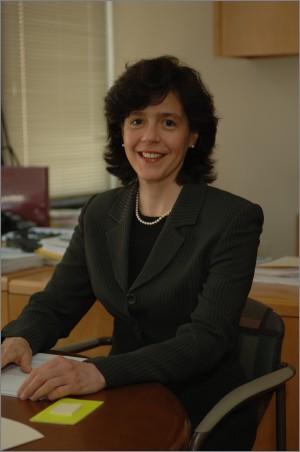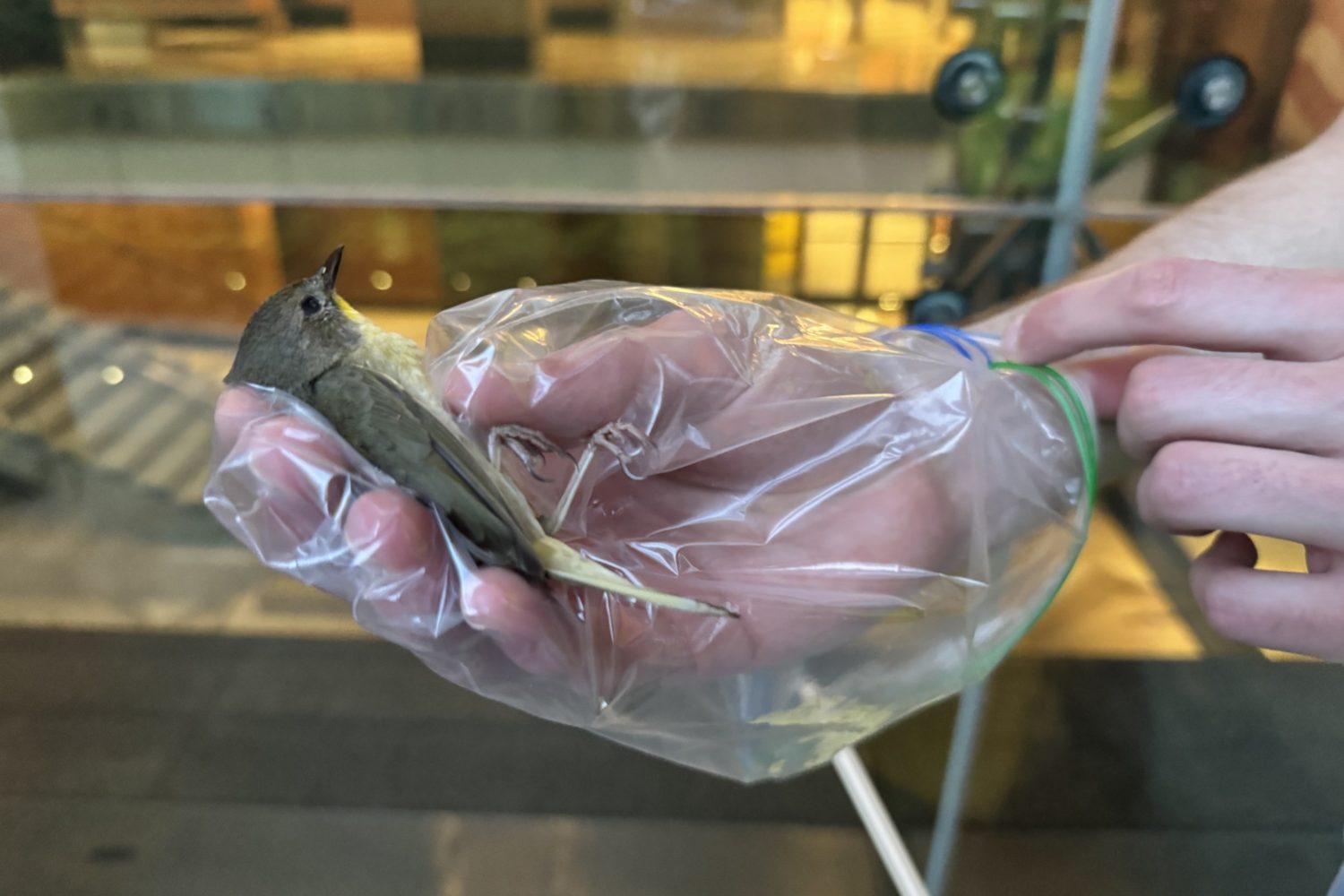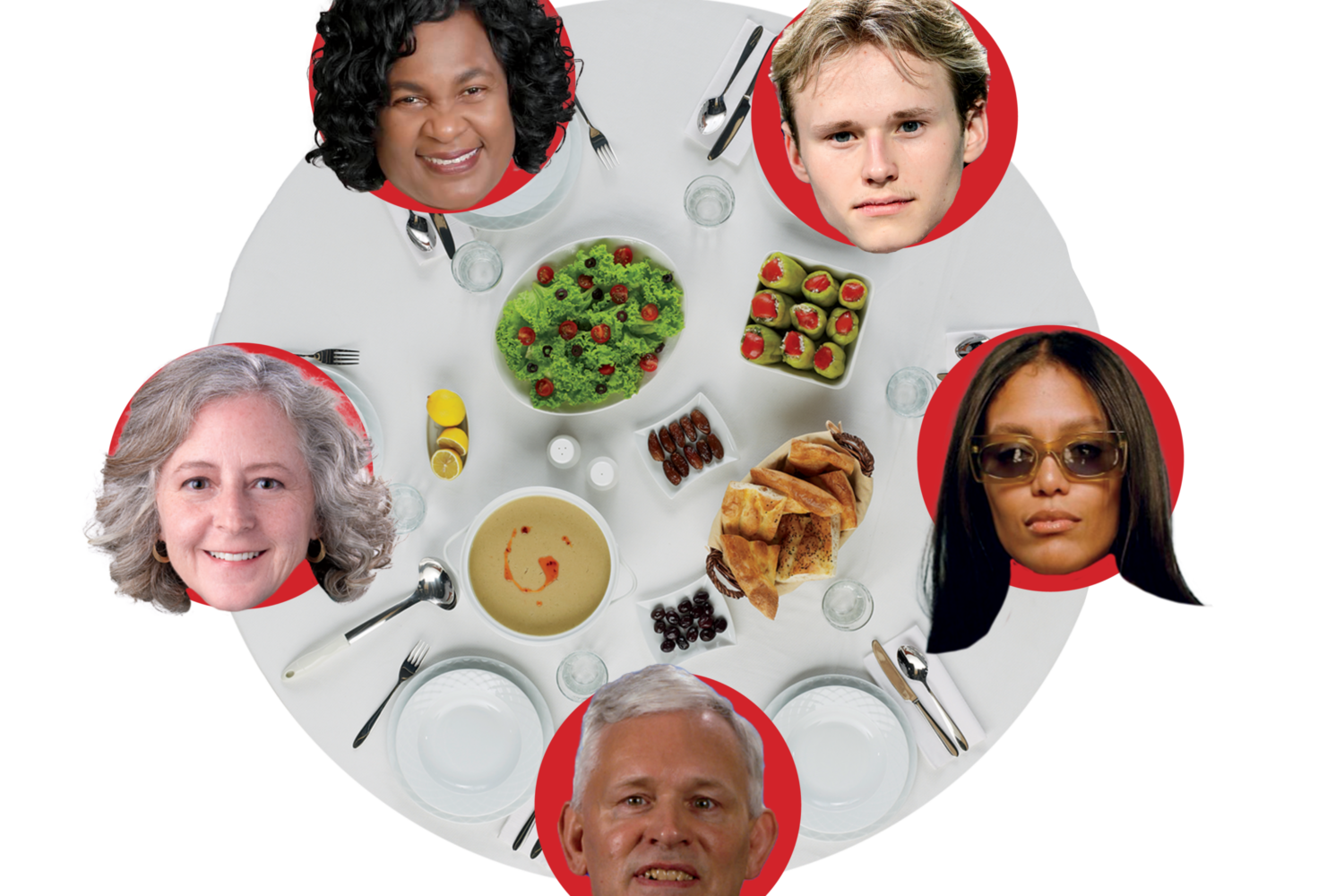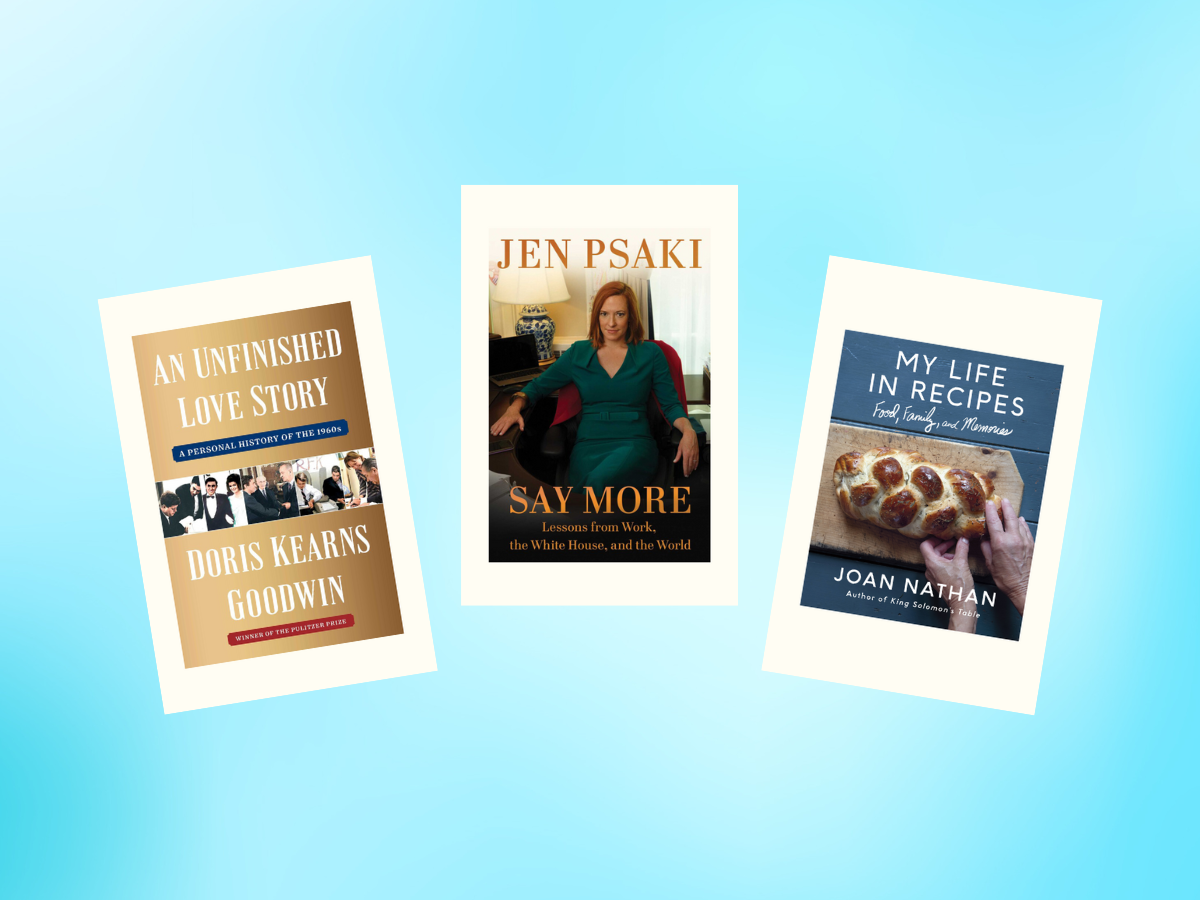Q & A with Dr. Zena Quezado

"Every day, patients tell me they feel genuine pain and suffering,” says National Institutes of Health anesthesia specialist Dr. Zena Quezado. “Whether it’s psychosomatic or physiologically traceable, I can’t tell. But it’s true to those for whom it counts most—the patients.”
As chief of the department of anesthesia and surgical services at NIH’s Clinical Center, Dr. Quezado is proud of advances in pain management.
“We’ve developed a variety of new drugs and techniques that we use to treat pain. But the best thing that’s happened in pain management over the past decade is the attention it’s gotten. That’s long overdue.”
Quezado, 45, was born in Patos, a small city in northeastern Brazil, and grew up in Fortaleza, near the equator. Her father was a civil engineer, and her mother stayed at home with five children.
Quezado received her medical degree from the Federal University of Ceará in her hometown. She moved to the United States in 1986 to intern at Philadelphia’s Albert Einstein Medical Center. She stayed there for her residency before moving to NIH’s Critical Care Medicine Department in 1990.
She has been an anesthesiologist at Harvard Medical School and Shriners Hospital in Boston and has taught at Harvard and George Washington University medical schools. In 2004 Quezado won an NIH award for excellence in patient care; the next year she won the Director’s Award for dedication to the Clinical Center’s mission and her leadership of anesthesia services.
Quezado commutes by bicycle between her home near DC’s Dupont Circle and the Bethesda campus of NIH. In her office, we discussed what she’s learned.
What causes pain?
Dr. Zena Quezado: Any of a large number of things. Pain is a complex phenomenon, different for different people. Basically, it’s a response to a stimulus that’s considered noxious. The complexity grows because this response depends upon the person’s experience, social environment, age, gender.
These are scientific explanations. But for me as a doctor, pain is what the patient tells me hurts.
Studies that look at a cohort of patients and their incidence of pain reveal that it’s higher in middle age than in the young and old. Women especially complain more of pain when middle-aged than before and after. And the pain threshold is higher in males.
How about children versus adults?
This is exceedingly difficult to measure. Our tools for measuring pain aren’t readily applicable to children. Sure, they’ll cry “ouch” and make faces when they get hurt, but children also cry because they’re hungry, wet, or anxious. So we can’t easily determine which cries stem from pain. This area lacks solid information, so it makes children even more challenging to treat.
What about older people?
They go through a series of physiologic changes that may make them less able to feel or report pain. Remember that when we talk about pain, we’re really talking about reported pain. This may or may not reflect true incidence of pain. A more stoic person will not complain much; others, with a minimum of stimulus, will scream.
Nevertheless, studies on objective measures of pain show that the threshold in older people is higher than in middle age. Changes in the nervous system may mean that they perceive, or feel, less.
Has there been an evolutionary development of pain?
Pain’s an indicator to the brain of some stimulus from which the organism should retreat. You get away from what would harm you. It is, in a physiologic sense, a very good thing. But if someone experiences chronic pain, it is a great stress if that person can’t escape from the noxious stimulus. That makes life miserable.
Does it indicate something fundamentally wrong with the body?
Usually. That’s especially true with neuropathic pain—continuous pain that is a response to stimuli in the central nervous system. For some of my patients with chronic-pain problems, even a very light touch elicits excruciating pain.
How do you explain that?
Certain changes in the central nervous system—called neuroplasticity—happen. In some cases, this reflects what is known as a “wind-up” phenomenon: Once the cycle starts, it’s hard to stop it.
We’re just learning which medications may interrupt this cycle and improve the patient. Years ago, such patients with infections of the central nervous systems were considered crazy. Now we know that patients with incredibly uncomfortable and sensitive reactions to almost any stimuli suffer from declining neurological processes. They’re not crazy.
How do you know the reaction isn’t psychosomatic? Nothing you can do remedies psychosomatic illness.
I hate to say there’s nothing I could do. One thing I’ve learned is that many things we cannot explain merely attest to how little we know on key aspects of medicine and science. Yes, we know little about psychosomatic responses now, but I believe there’ll come a day when we’ll simply treat those responses.
I treat mostly acute pain after a surgical procedure. If you have an incision, you’re going to hurt—no two ways about it. But patients respond so differently that it always makes me wonder. Some patients have much more pain, requiring more medicine to reach an acceptable level of comfort; others are the opposite. What we call “mind response” could explain the differences. But in the end, we just don’t know.
We do know that some enzymes that metabolize medicines lead to different responses, due to patients’ genetic makeups. The field of pharmacogenomics explains some of these differences in reactions. But too often when we don’t know how to explain some pain, we blame it on the mind. I believe we’ll be able to find the real explanations for such different responses.
Some people seem able to endure awesome pain. We read of heart operations in China done with acupuncture, without anesthesia.
Well, some diseases render the person altogether devoid of pain. This is a very dangerous condition. That person loses any protective response to a noxious stimulus.
But some of my patients who have had chest surgery require very little therapy to become comfortable again, to resume moving and then walking. Others require much more medicine. Again, it hinges on how they metabolize medicines, the patient’s expectations of comfort after surgery, the entire dynamics of the situation.
Have there been solid advances in pain management?
Yes, we have all sorts of new drugs and techniques. Besides, many regulatory bodies for hospitals now demand documentation on pain therapy. Reviewing these data will enlighten our means to address pain. This process hadn’t happened before.
What are the big advances in pain management?
We now have a variety of choices, especially an increasing number of medicines. We have opioids—morphine derivatives—with different means of delivery and duration and with fewer bad side effects.
For acute pain, we can deliver local anesthetics and opioids that treat only the affected area. This enables the patient to be much more awake, have less nausea, and recover from surgery more easily. Moreover, there are different drug classes than opioids—for example, nonsteroidal anti-inflammatory drugs such as ibuprofen—that benefit pain therapy.
To treat chronic pain, we have some new drugs, with better side-effect profiles, that have proven more efficacious. And of course, acupuncture and hypnosis can be used.
Is acupuncture effective?
In some cases. Some studies show its beneficial role in both chronic and acute pain. Hypnosis has its role in treating both types of pain, too.
How about herbs?
I don’t know much about that, but I’ve read some research about plants that generate drugs proving very effective in treating pain. Clinical studies of a cactus derivative seem promising to alleviate pain under certain conditions.
I think first about morphine for pain relief.
Yes, that’s very much used—because it really works. It’s not devoid of side effects, but it’s most often used nowadays.
Specifically, how do you treat a patient with chronic or acute pain?
If you come to me and say you have a lot of pain, I try to diagnose why. Is there an illness? Compression of a nerve? An inflammatory process? So while I’ll treat the symptom you’re having right now, I’ll really try to treat the cause of that symptom.
This approach can work well in cases of back pain. With the onset of pain, we often find abnormalities in the back.
We now have medical specialists in pain management. It’s a wonderful specialty, as it takes such a multidisciplinary approach. For instance, anesthesiologists will treat acute pain after you have surgery. They can prescribe opioids and have patient-controlled analgesia—where, postsurgery, the patient himself controls when and to what degree opioids are delivered in his body.
For certain operations—those in the chest or abdomen—we use neuraxial blocks. They can be epidurals that deliver continuous local anesthetic and/or opioids. They go just to the affected parts of the body, where the pain probably comes from. That’s for acute pain.
For the treatment of chronic pain, internists, family practitioners, psychiatrists, nurses, and other specialists play an important role. They form a team to focus on alleviation of the pain. It’s such a complex phenomenon that they all need to approach the patient as a whole.
Are Americans’ expectations too high? Most people in the world live with daily pain, while Americans want a world without pain.
You’re right. Expectations do play a major role. If you’re going to have a baby, you’d better expect labor pain—quite acute pain.
I grew up in northeastern Brazil. I believe that pain was better tolerated there than here. When people there went into surgery, they expected major pain. So they’d take it better than those who expect little or none.
Talk about back pain. You see people with electronic devices on their belts to relieve that pain.
Those are devices that use an electrical stimulus to trick the nervous system into alleviating such pain. It works for some patients but not for others.
Back pain is tough to relieve because it can be caused by such a wide variety of stimuli. Typically, many approaches are tried, and whatever works for that patient is adopted. We’re still doing an educated variant of trial and error.
Steroid injections in the area of pain can work. The use of opioids and nonsteroidal inflammatory drugs can also work. Physical therapy has a role; exercise is very good in treating back pain at certain stages.
Is back pain the most common form of chronic pain?
Actually, the back, hip, and shoulder account for most chronic pain. But back pain seems the most complex to relieve.
People with back pain can have different types of abnormalities in the spinal cord or discs. But some people with those exact abnormalities experience no pain whatsoever. There’s so much here we don’t understand. Some patients require surgery, which may or may not ameliorate their symptoms. These patients often can’t go to work, and they end up feeling terrible all the time. Back pain can ruin one’s life.
What do you do when you don’t succeed in alleviating chronic pain?
We tell the patient he must now learn how best to live with this pain. We help by putting him in touch with a psychiatrist or clergy and showing family members how to help him. That person has to reshift his life. It’s very bad news.
In medical schools, is there a specialty for pain management?
There are many paths to becoming a pain-management specialist—through anesthesiology, for example, or by becoming an internist or family practitioner. Our chief of pain-and-palliative-care service at NIH is an oncologist. We have psychiatrists who specialize in pain treatment, and some neurologists, too.
How did you get into pain management?
Through anesthesiology and by treating patients’ pain related to surgical procedures. We carry a patient through the procedure, which is a major stress, and monitor the physiologic functions very carefully. We’re talking about major shocks to the body during an operation. Once the surgery is complete, we must treat postoperative pain, which can be quite severe.
To get a patient through a surgical procedure relatively comfortably is a real emotional treat. And it’s intellectually challenging to come up with the right remedy for their pain. We use our brain a lot and must stay incredibly attentive, because we’re responsible for that patient while a surgical procedure is under way.
The later pain can be overwhelming for many patients. To help ameliorate that trauma during a critical period of their lives is very rewarding. Many times we don’t do it to the patient’s satisfaction or to my standards. But when we do, it’s superb.
How do you keep from getting hardened, seeing all this suffering?
Doctors must maintain a rational approach to problems, so avoiding an emotional response that would interfere with our work is a good thing. But to get hardened to the patients’ pain—no, this is not good.
But doesn’t that happen over time?
Personally, no, it doesn’t. Despite all the changes in medicine, we still attract young men and women who really want to help others.
It’s a privilege to take part in people’s lives during such vulnerable times. We can markedly improve their lives precisely when they’re filled with the most stresses, pain, and worries. These crises can alter family relationships for the better. To see that happen, and experience it with the family, is a privilege.
I tell medical students entering this field that they must be able to accept people with chronic pain that they can’t successfully treat. They must be compassionate. There’s a huge emotional component to this field.
The more we learn about pain, the more fascinating the field becomes. We see patients with lower-back pain who used to be miserable but now can be treated. The use of anticonvulsants can change their entire lives.
What have you learned overall about pain management?
That we have so much more to learn about it. I feel we’ll soon be making big breakthroughs in treating cancer pain. I say that because of some of the work conducted here at NIH. Patients will be using new therapeutic modalities for this type of pain.
I’ve learned to focus on mysteries, on the sensations we can’t explain. We tend to push those aside, but we must always listen to the patients. Many times, their comments and complaints have led to major breakthroughs.
We doctors know a lot less than we think we do. Patients and their families can teach us a lot about pain, diseases, and effective treatments.
Watching and questioning lead to discoveries and betterment of our lives. I believe in an inquisitive approach to life.

















